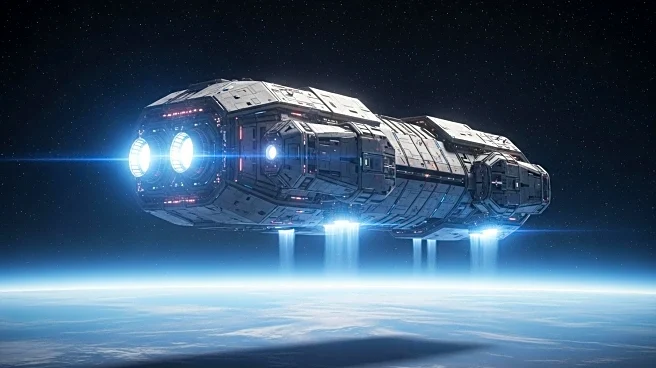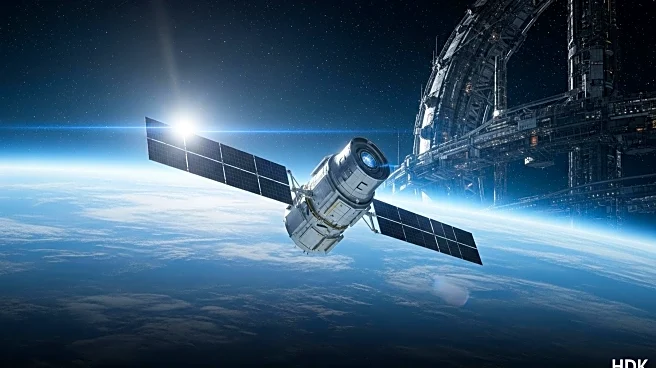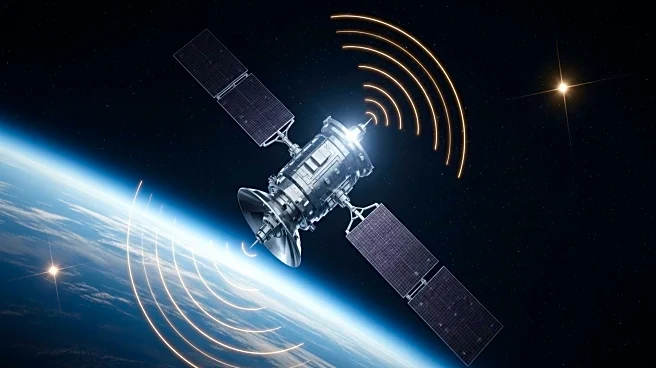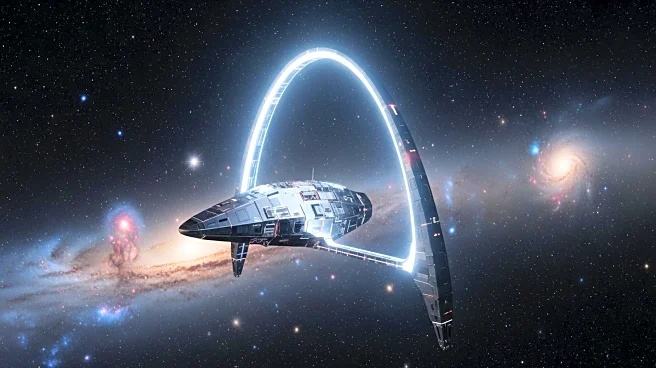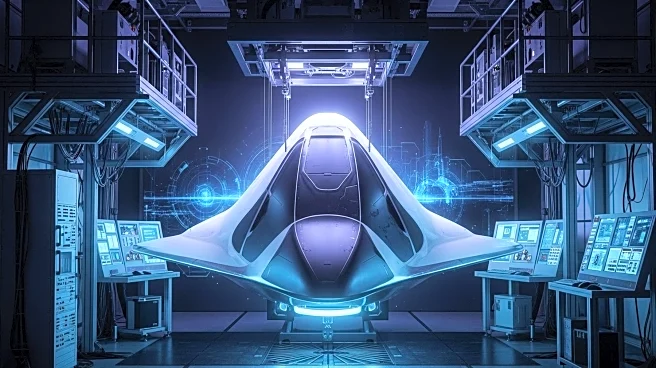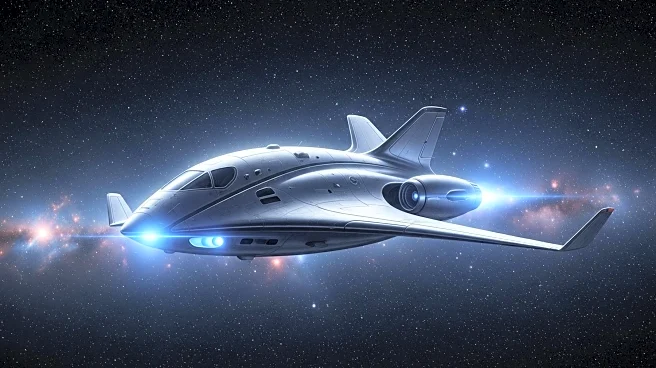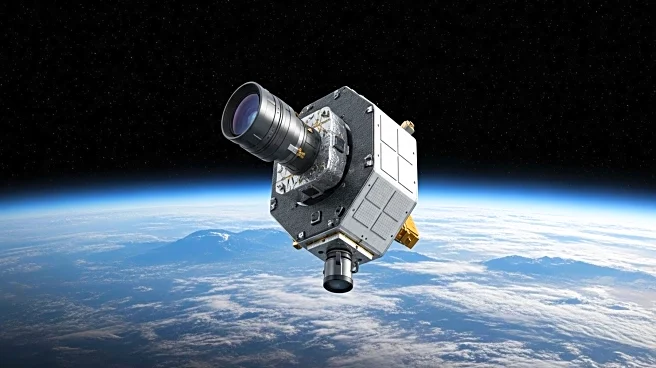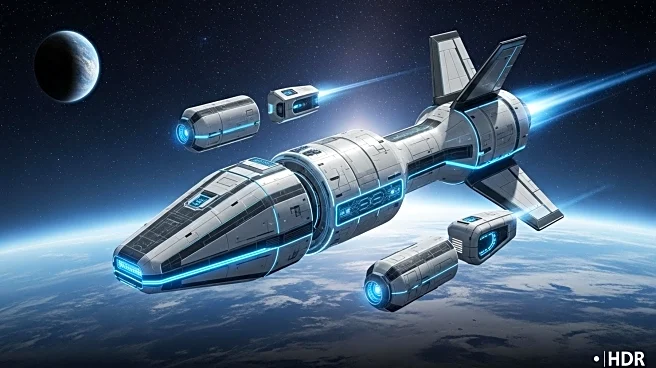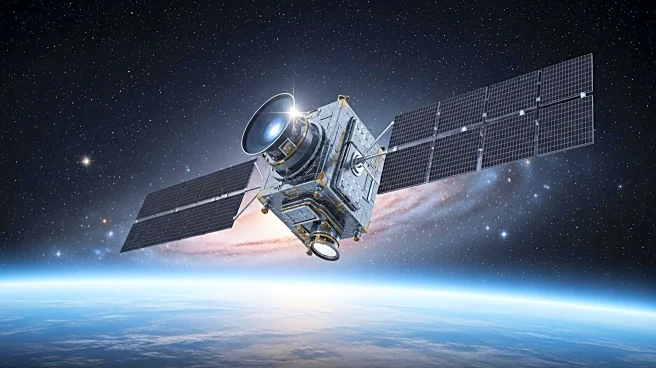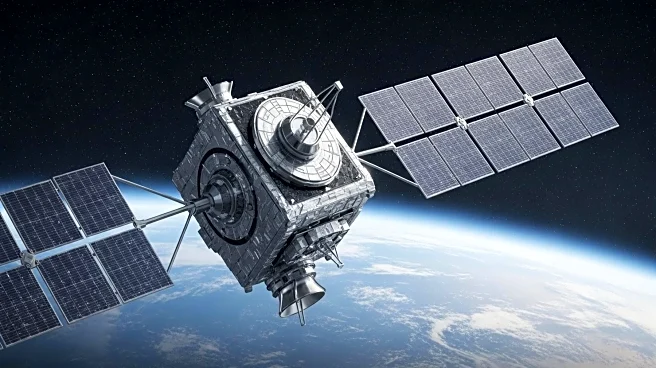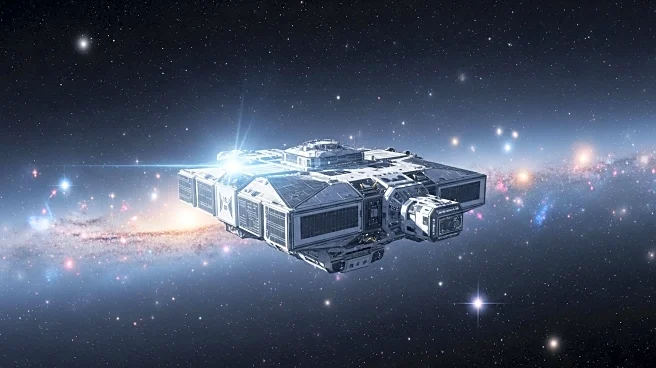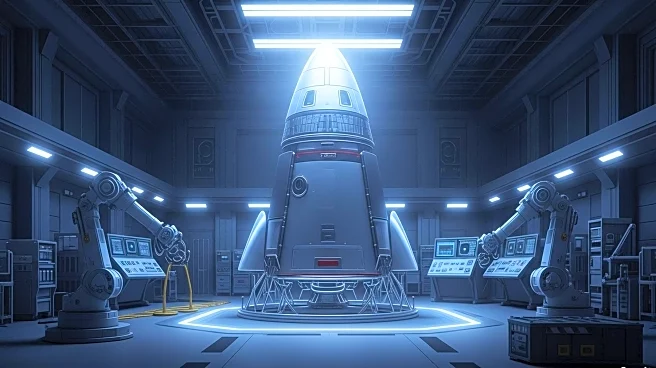What is the story about?
What's Happening?
Inversion Space, a startup founded in 2021, is developing a space-based delivery system designed to transport cargo from low Earth orbit to any location on Earth within an hour. The company recently introduced its Arc vehicle, a 4-foot wide, 8-foot tall spaceplane and cargo capsule hybrid capable of carrying up to 500 pounds of supplies. The Arc is designed to remain in orbit for up to five years, ready to deliver cargo on demand. It features a deorbit engine and an autonomously maneuverable parachute for reentry and landing. Inversion Space aims to launch the Arc by the end of 2026, following the lessons learned from its earlier demonstration mission with the Ray vehicle, which encountered a propulsion malfunction.
Why It's Important?
The development of the Arc vehicle by Inversion Space represents a significant advancement in global logistics, particularly for military applications. By enabling rapid delivery of mission-critical cargo to remote or infrastructure-limited areas, the Arc could enhance national security and defense readiness. This capability introduces a new dimension to logistics, offering unprecedented speed and reach. The potential for a constellation of such vehicles could transform how supplies are delivered globally, impacting industries reliant on timely and efficient logistics solutions.
What's Next?
Inversion Space plans to continue developing its Arc vehicle, with a target launch by the end of 2026. The company aims to build hundreds of these vehicles annually, establishing a constellation of cargo reentry spacecraft by 2028. As the project progresses, potential collaborations with the U.S. military and other stakeholders could emerge, leveraging the Arc's capabilities for strategic and operational advantages.
Beyond the Headlines
The introduction of space-based logistics systems like the Arc could have broader implications for the space industry and global supply chains. It may prompt regulatory and policy discussions regarding the use of space for commercial logistics and the potential environmental impacts of increased space traffic. Additionally, the success of such systems could drive innovation and competition in the space logistics sector, influencing future technological developments.
AI Generated Content
Do you find this article useful?
